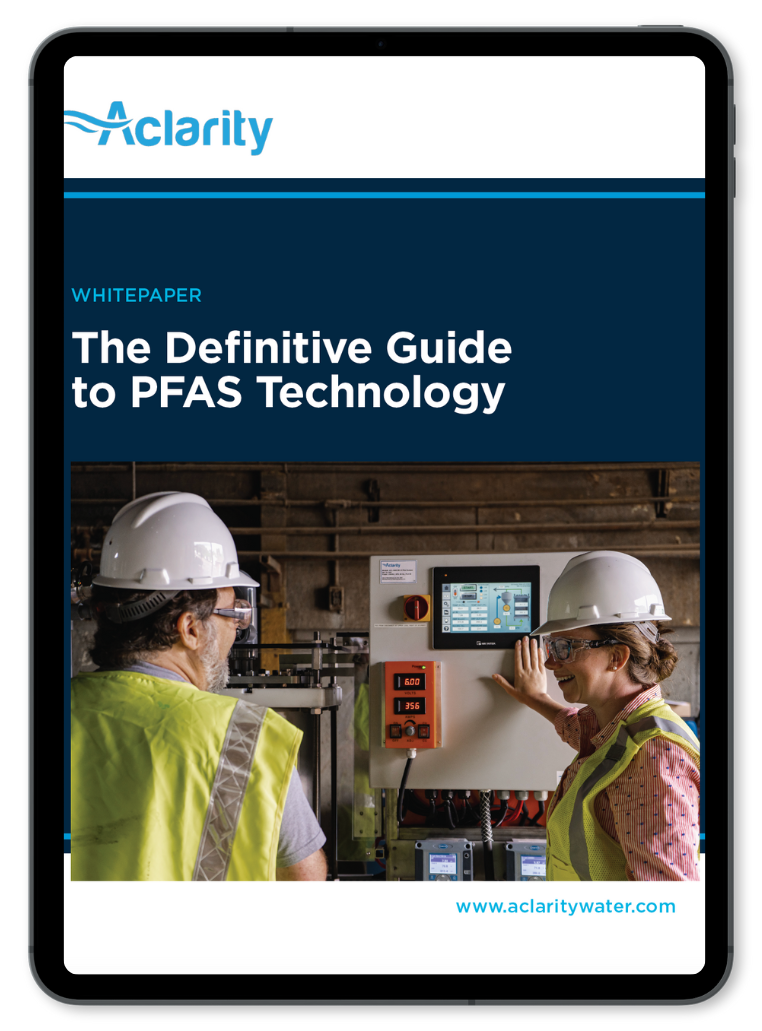Choosing the Right PFAS Technology: Total Cost of Ownership and ROI

To determine if a particular solution makes fiscal sense for your facility your organization needs to identify Total Cost of Ownership (TCO) and Return on Investment. Implementing PFAS technology is the smart thing to do for our environment – and your bottom line. Making the right decision on facility upgrades can easily improve operations and help you achieve your sustainability goals.
Recent research asserts that the true cost of not dealing with PFAS could be more than $60 billion over the lifetime for the current U.S. population. And with thousands of types of PFAS identified, this bill will likely accelerate for future generations if facilities and businesses fail to effectively resolve this issue, right now.
Total Cost of Ownership
As you conduct business planning to determine whether PFAS removal/destruction is cost-feasible, we recommend taking a long-term view over the lifecycle of your endeavor. Here are some activities to start with:
1. Create a statement of startup costs to determine initial and ongoing capital expenditures (e.g., maintenance).
2. Take compliance risk into account and calculate different risk scenarios to estimate potential costs (i.e., inherent and residual risk).
3. Identify costs associated with:
- Wastewater/media hauling (current rates and potential future rates)
- Disposal
- Training
- Component lifetime/depreciation
4. Assess the viability of the following to lower your TCO:
- Pretreatment
- Upgrades
- Technologies that can run with minimal labor
- Software or sensing technologies that work in real time
Evaluate Your Current Situation
The following three questions will help you assess the efficacy of dealing with a potential PFAS issue related to your current business outlook.
- Are your current costs prohibitive for the existing removal/disposal of PFAS?
- Will these costs also be prohibitive in the future if they prevent your organization from expanding?
- How much operational efficiency will you save by installing a PFAS destruction technology?
As you reflect on these questions, make sure to account for whether you currently pay wastewater disposal fees (in dollars and as a percentage of your overall operating costs). Next, look at how much waste will the new system create, the ensuing percent of PFAS destruction, and most importantly, how much you will save by potentially foregoing the majority of your waste disposal fees.
Consumables
Lastly, if you are using or plan to use granular activated carbon (GAC) or other media requiring frequent replacement, evaluate how often this needs to take place to ensure efficient business operation. Furthermore, if you plan to expand, take into account a greater frequency to process such media. Here are a few final questions to consider:
- What are the costs and downtime associated with replacing or regenerating media along with offsite hauling of PFAS waste?
- Will the new system be able to operate with greater uptime?
- Are there technologies to implement with fewer consumables (or potentially none)
Thinking through and revisiting the above questions regularly will help your organization determine the true total cost of ownership and allow the calculations to illustrate the full picture of your Total Cost of Ownership and only then can you start to determine what an appropriate ROI may look like. With PFAS disposal costs continuing to increase, dealing with your PFAS issue now could improve future expansion plans and positive brand recognition in the community. The Total Cost of Ownership and Return on Investment of a potential solution must be determined for your facility by your business. The best thing you can do for the environment and your bottom line is to implement PFAS technology. Making the proper facility improvement choice can simply enhance operations and assist you in achieving your sustainability objectives.

WHITEPAPER
Download The Definitive Guide to PFAS Technology whitepaper and delve into current PFAS removal technologies. In this whitepaper, analyze the pros and cons of a variety of PFAS technologies and discover practical exercises for organizations to identify and implement suitable solutions. In this comprehensive document, walk away with an understanding of PFAS management, facilitating informed decision-making to reduce PFAS risk and protect environmental and public health.
